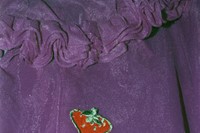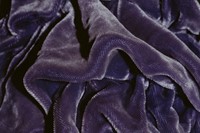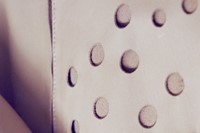Walking into The Arc is like stumbling upon Aladdin’s Cave – albeit one that is tucked away behind a takeaway on Hackney’s Mare Street. This is the rare collection of sartorial wonders personally amassed by Jennefer Osterhoudt, the San Franciscan designer who was at the side of John Galliano and Alexander McQueen during the 90s and early 00s in both of their eponymous studios, as well as during their respective fabled tenures in the couture ateliers of Givenchy. The white, windowless space is filled with double-tiered and colour-coordinated rails supporting some of the most immediately recognisable pieces of ready-to-wear and haute couture in the world. There’s a glass cabinet full of tea-stained invitations to Galliano’s earlier shows; a garment bag filled with 16 yards of lavender taffeta that once cascaded over a dozen mattresses as part of Galliano’s first-ever haute couture collection; more than 300 pair of shoes, many of which were made by Manolo Blahnik and remain inscribed with the names of the supermodels that teetered down the Paris runways in them. It’s a collection to rival that of the leading museums – and of even the most fearsome and hawk-eyed collectors.
Fashion curators would baulk at the lack of acid-free paper and the cigarette smoke permeating the space, but then again, this is first and foremost the wardrobe of a woman well-lived. “I’ve worn everything in here at least once,” says Osterhoudt, who moved to Paris in the early 90s to study at the French outpost of Parsons School of Design. “I always feel amazing. Sometimes it backfires because I would wear it on dates with normal men and they’d just think I’m a freak. This one guy who dumped me was like, ‘Here’s a good tip for you: next time you go on a first date don’t wear pirate shoes, a pirate bag, pirate skirt, pirate belt, pirate hat and pirate scarf.’” Suffice to say, she never let that stop her from luxuriating in the pieces that she put her own blood, sweat and tears into. While still a student, she would sneak into as many fashion shows as possible, which eventually led to a job as the first assistant to John Galliano, who affectionately nicknamed her “daughterlina”. “Me and my friend would go to a venue eight hours before a show and hide in the bathrooms,” she fondly recalls. “Every time someone would come in to clean, we would make gross noises. We would scout neighbouring buildings for secret passageways and windows and sometimes, because Paris was still so chauvinistic, women didn’t need invites if they were on the arm of a man with one. We tried everything, and ended up sneaking into Gaultier, Margiela, Chanel and Lacroix.”
As John Galliano’s assistant, Osterhoudt’s duties spanned everything from sourcing vintage garments and working with niche ateliers on production to hand-crafting invitations and truffling for esoteric materials that would form parts of the collection and sets for the designer’s spectacular coups de théâtre. Her role allowed her to amass some of the most significant pieces of his work: those that the designer became synonymous with. She eventually followed Galliano to Givenchy, where she remained to help his successor, Lee McQueen. “They both loved old garments and really studied them,” she explains. “I would spend a lot of private time with them, too, because I lived with both of them at various points. Lee was a bit more social and would love to hang out at Café Cox on Rue des Archives and be a normal person. John was a complete fantasist and lived in his own world. I remember one time I got home when he was staying with me and he was cleaning the house in my stilettos, a little French apron and short shorts, with a bandana around his head. And he was just home alone, keeping himself entertained.”
Osterhoudt launched The Arc this year with Nick Royal, a fashion stylist who has gathered further collections from friends that they have worked with over the course of time. “We’ve got a whole load of Christian Lacroix haute couture and early Hedi Slimane Dior Homme coming soon,” she excitedly shares. Their aim is to create an open resource for designers, students and stylists and continue to grow the informal archive of 90s haute couture and ready-to-wear showstoppers. From what we’ve seen, if it continues to grow at such a rate, Hackney Council may need to consider making it an official museum. Here, we take a closer look at some of its pieces.
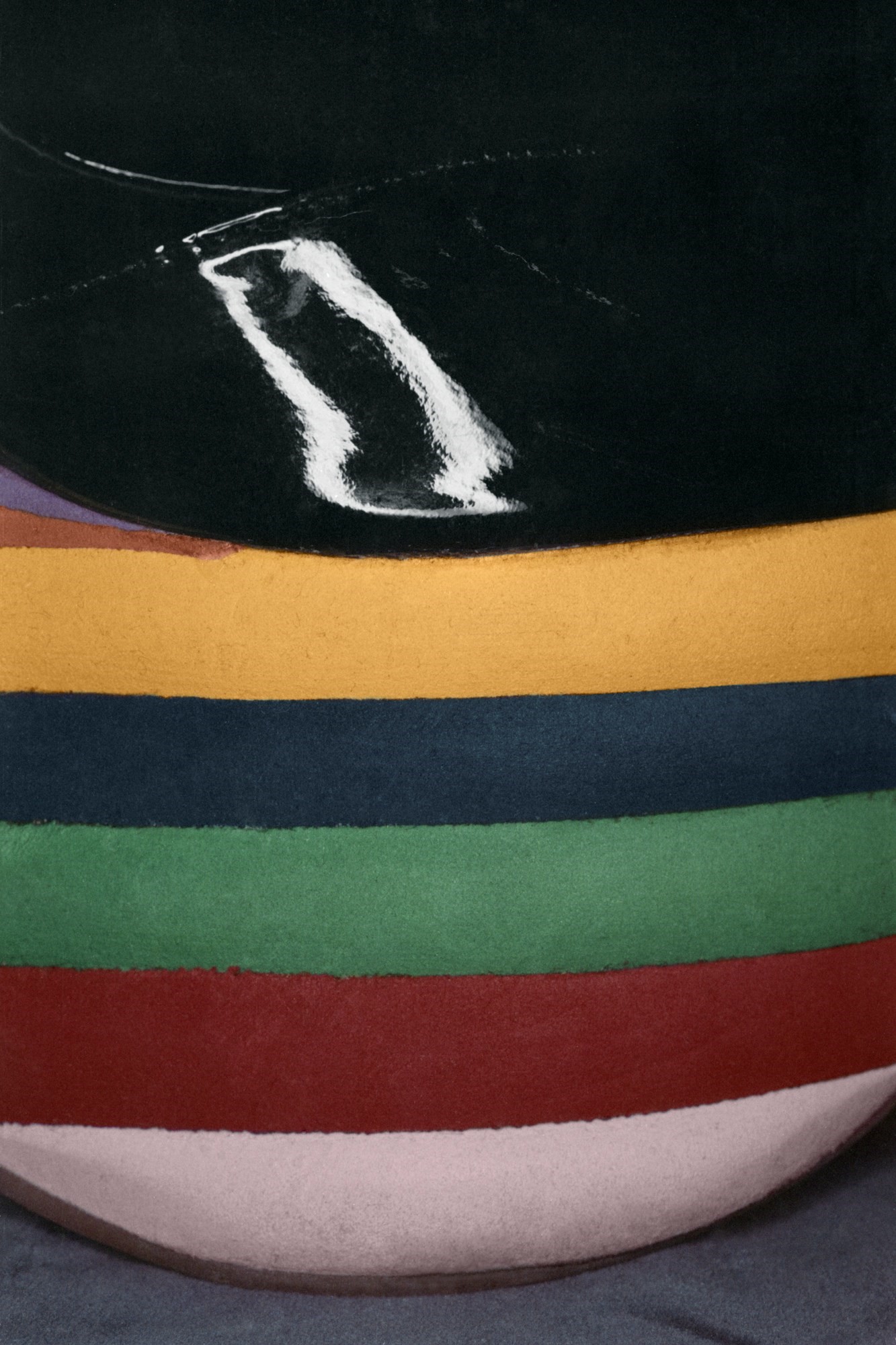
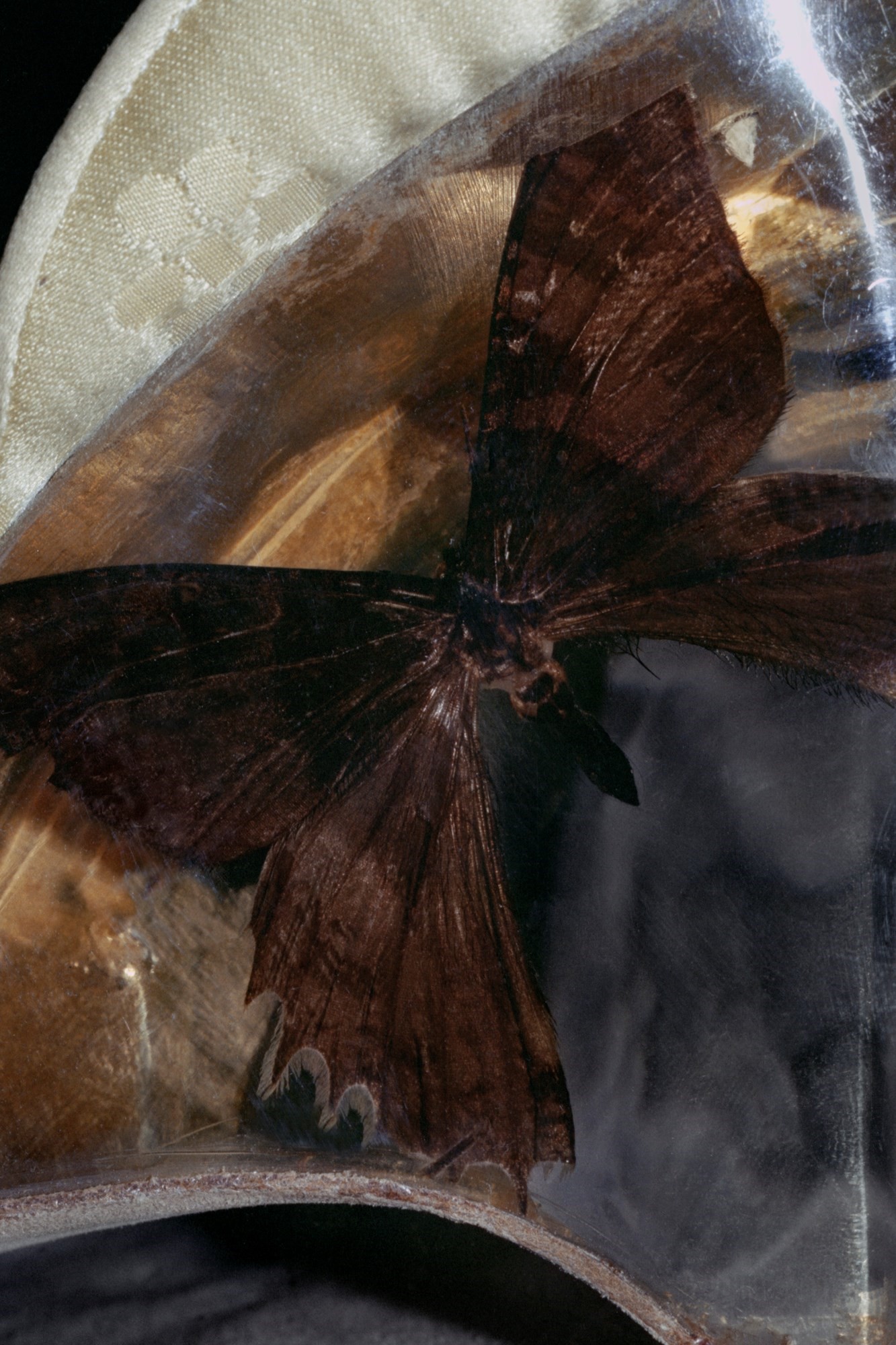
Fig 1. The Faux Ferragamo (left)
“This is a direct copy of a Ferragamo pair of sandals from 1938,” according to Osterhoudt. The Italian brand’s version, which can be found in the V&A, was crafted from layer of cork covered in coloured pieces of suede and gold leather straps, taking inspiration from the American musicals popular at the time. Osterhoudt found this pair, made from carved microfoam and black patent leather, in one of her beloved vintage boutiques.
Fig 2. The Butterfly Effect (right)
Look closely at this image and you’ll notice a butterfly trapped in a mysterious setting. What may seem like a nod to Jurassic Park is, in fact, a pair of wedges from Alexander McQueen’s first haute couture collection at Givenchy. “I had to go to Deyrolle, the famous taxidermy shop in Paris, and buy butterflies to trap in resin – I was always there getting exotic birds and beetles for jewellery and hats,” recalls Osterhoudt. She then took the butterflies to the workshop of Robert Goossens, the feted jeweller famous for his work with Coco Chanel, who hand-poured resin over the butterfly and into a mould to create the wedge. “The butterfly was originally colourful, but it changed colour with the resin and ended up looking like a moth, which I think Lee quite liked.”
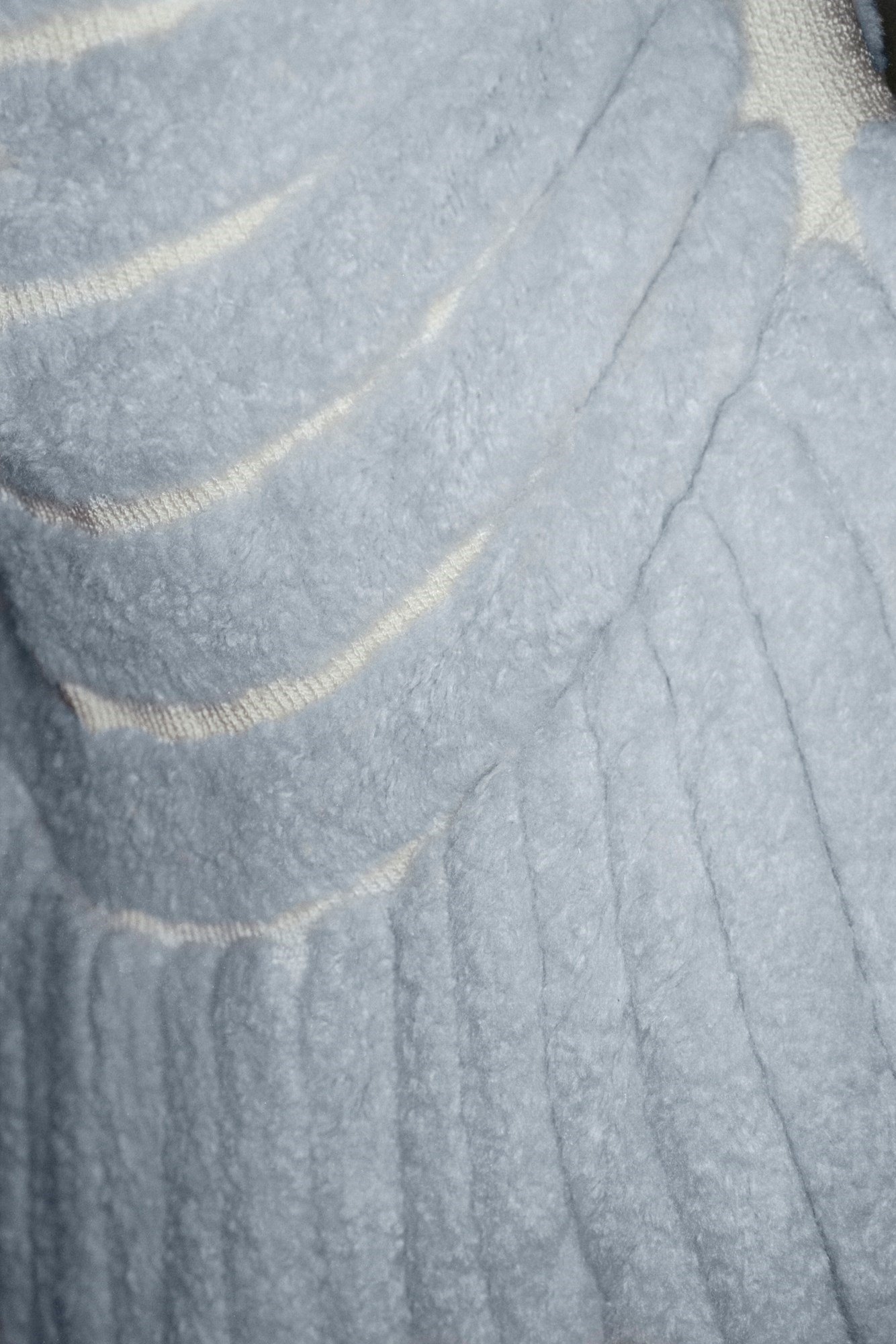

Fig 3. The Caterpillar Dress (left)
To see this Alaïa dress in person is to understand the skill of a master. The knitted ‘caterpillar’ dress, from 1991, is a feat of engineered knitwear that holds its own on a hanger and is architectural in its anything-but-simple shape. The combination of a plush towel-like, piled texture and the Tunisian designer’s famous stretch knit makes it akin to the shell of a sea creature, and when turned inside out the completely unlined garment mesmerisingly resembles a human ribcage. “I found it at a consignment shop and it was priced at next to nothing,” says Osterhoudt. “I think I screamed really loudly when I found it.” After all, it is an Alaïa.
Fig 4. The Stingray Shoes (right)
Crafted from stingray skin, these mules were from McQueen’s Givenchy haute couture collection for autumn/winter 1998. Worn by Shalom Harlow, whose first name is still endearingly scribbled onto the last, they were made by Manolo Blahnik, who Osterhoudt collaborated with frequently for both Givenchy and Galliano. “Stingray is so hard, it’s like bone or ivory, because it’s their skeleton on the outside of their body,” she explains. “Manolo would get so mad because it kept breaking his machines.” For Osterhoudt, shoes are a preferred memento. “I’m not model skinny but at least I have model-sized big feet!”
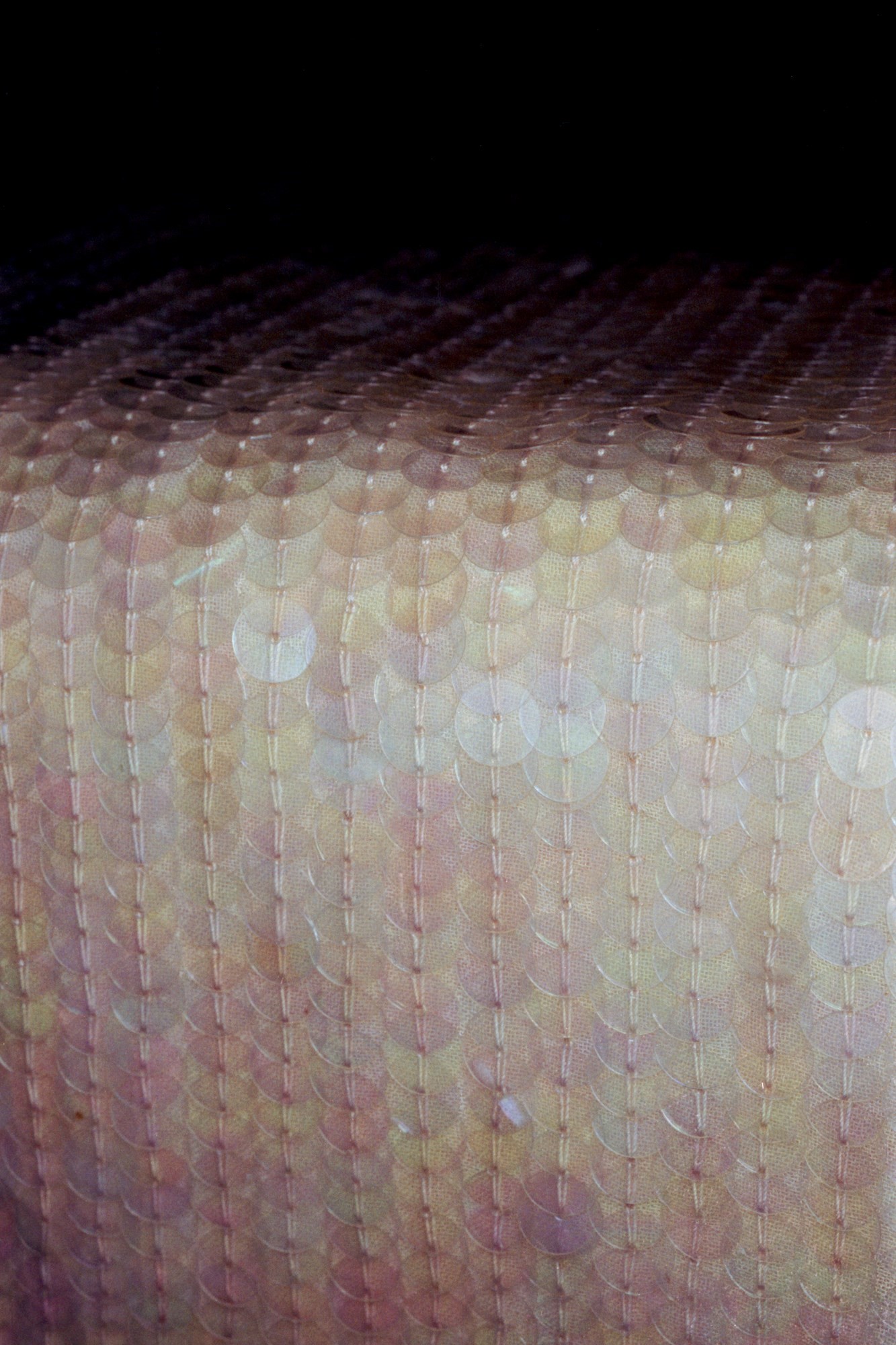
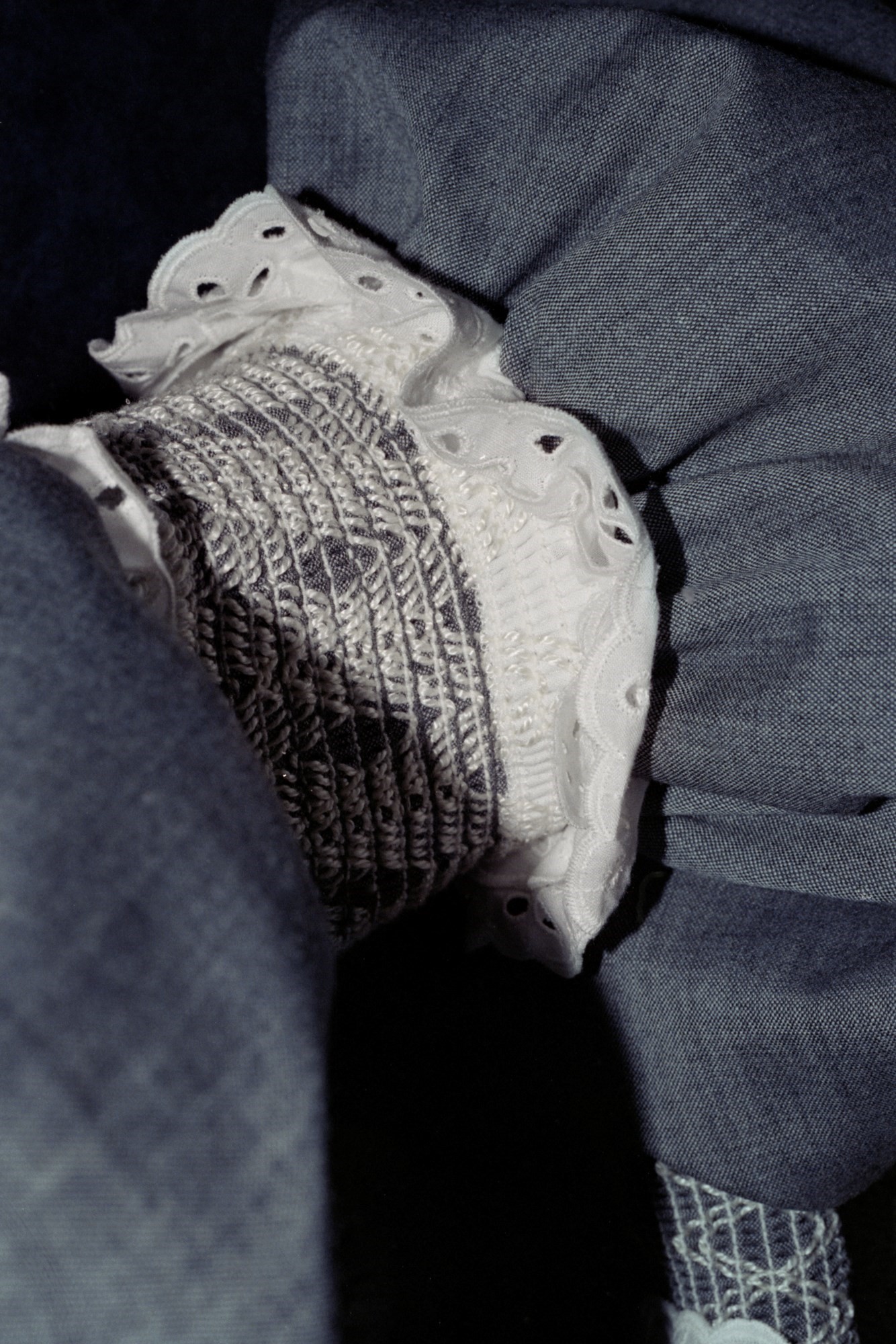
Fig 5. Happy Birthday, Mr President (left)
“There’s a lot of 18th-century menswear, 40s bias cut dresses, and 50s hourglass pieces in the collection because those are the periods that John was most interested in, so I would always be bringing him things,” says Osterhoudt. “I found this gorgeous sequined gown in Salvation Army for £10 (which is a lot for them) and it’s just most perfect, pretty dress.”
Fig 6. The Sentimental Shrug (right)
“This one is very meaningful to me because it was one of those times where the stress of it was so much and I had to get it done perfectly in time and I did it!” recalls Osterhoudt of this spring 1996 Galliano number. Having been tasked with finding a smocking machine in Paris, Osterhoudt found one in Sentier and worked tirelessly with a craftsman to turn nine yards of wool into three yards of a balletic bolero. “We were both crying because we had to do it over and over again because if one thread was missed, it had to be tossed in the garbage.” There was also a broderie anglaise trim that had to be painstakingly integrated, and the result was a garment that elegantly followed the line of the body and could be tied for dramatic effect. “It’s like when you have straight hair and get it curled and it somehow seems much shorter.”

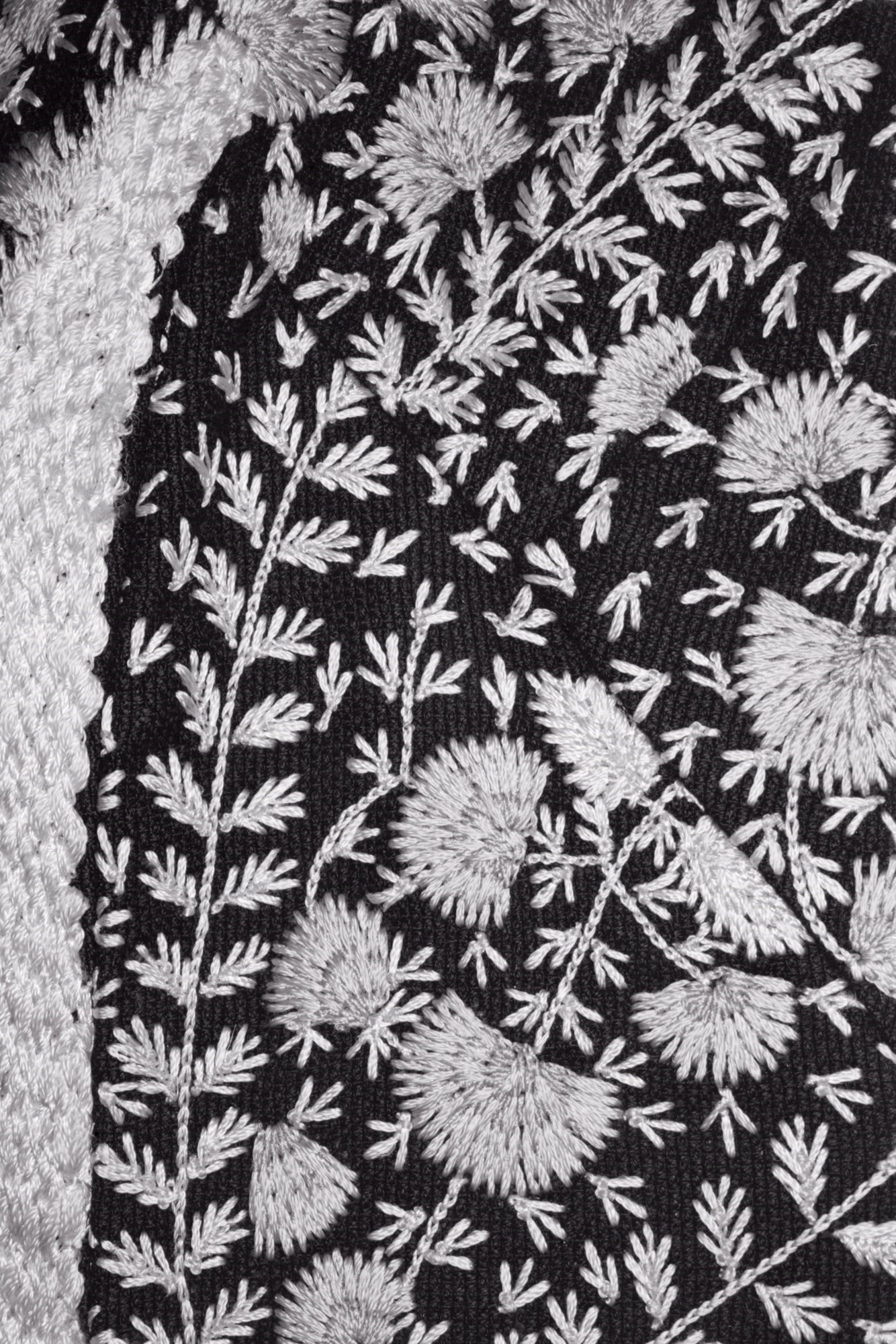
Fig 7. Lady Leopard’s Spots (left)
Conical coifs and leopard print were de rigeur at Alexander McQueen’s autumn 1998 Givenchy show, aptly titled ‘Lady Leopard’. This cream leather jacket was an innovative item at the time, programmed digitally and then laser cut. “It was very new to do that back then,” notes Osterhoudt. “This was the show that had Beatrice Dalle in and all of the girls came out and leant against these lampposts like in Chinatown, the Jack Nicholson film.”
Fig 8. Little Lilac Riding Hood (right)
“This is the from the little red riding hood show that McQueen did for his own label in 2002, where the girl comes out in the church and she’s holding a pack of wolves, and is wearing a lavender leather red riding hood suit with boots and a big cape,” remembers Osterhoudt, who says this particular style was popular amongst the studio’s staff. “There would be people at McQueen who would wear it head-to-toe every day – green python boots with green python shorts and a green python tuxedo jacket – for work!”


Fig 9. Bias-Cut Velvet (left)
“A lot of things I’d have to sacrifice as they would be cut up,” explains Osterhoudt, who bought this 30s bias-cut velvet gown (a rare combination of cut and textile) whilst working for Galliano. “We would go to this amazing textile dealer called Lelièvre, which provides fabrics for the restorations of old chateaus, and they’d show us a square of fabric and it would just be the most beautiful thing, but so expensive. We would be there weeping because we loved it so much.”
Fig 10. Funny Girl (right)
Osterhoudt grew up on San Francisco’s Haight Street, famous for its hippie community and vintage shops. She found this violet chiffon pyjama set, which is covered in charming strawberry badges, in one of them as a teenager, and subsequently wore it out during her club kid days. “I always thought it was a bit Barbara Streisand Funny Girl,” she says with a laugh.
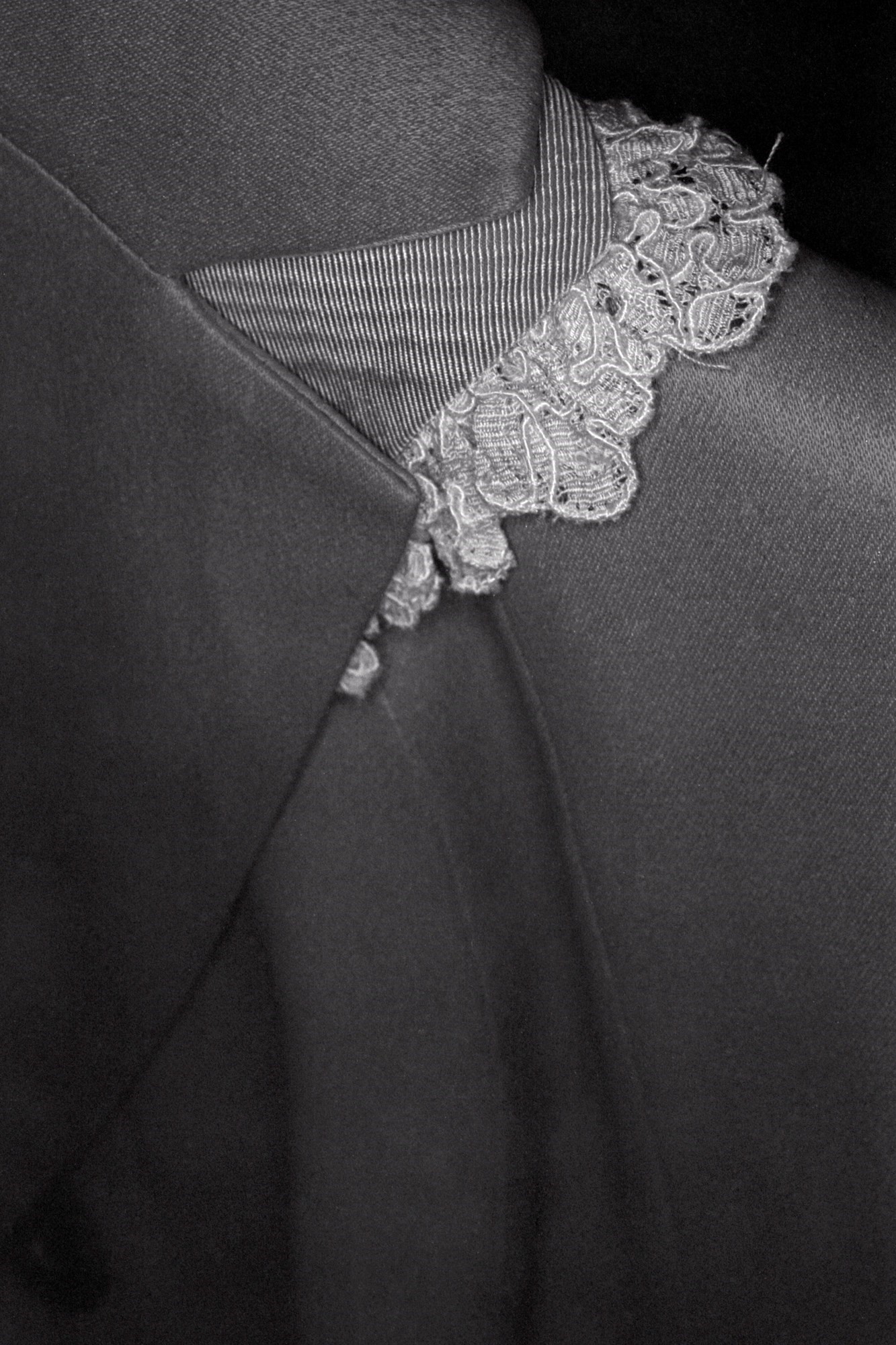
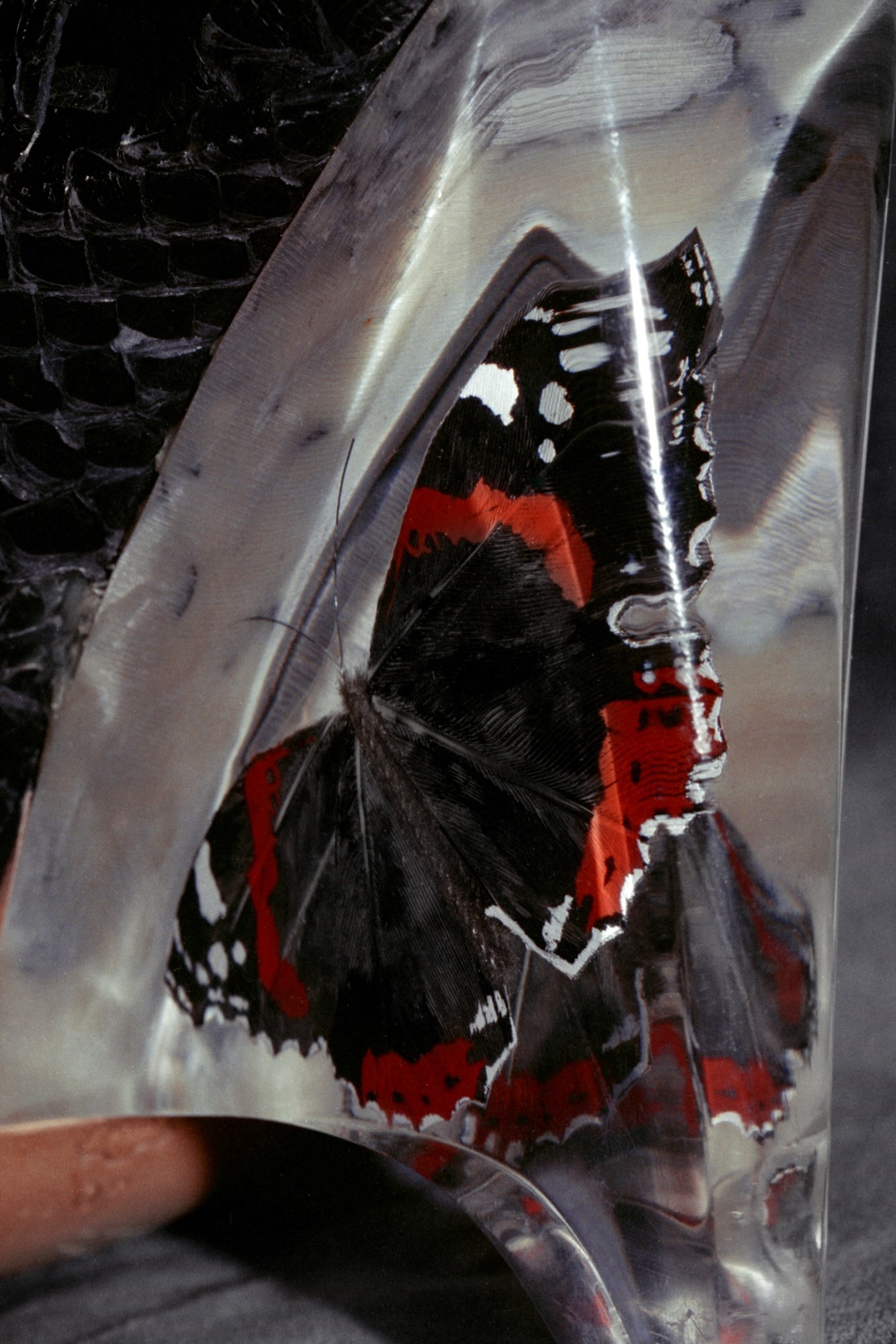
Fig 11. Pin-Ups and Pastel Saris
Debbie Dietering wore this sinuous silk jacket on top of a bustle skirt made of spliced saris in Galliano’s spring 1995 ‘pin up’ show, held in a vintage car showroom. “I used to have to go and buy all the saris for John in the area that was very Indian and Arab, near the Gare du Nord,” recalls Osterhoudt. “They had millions of sari shops but John only wanted pastel colours, and they just don’t exist. I would go through every single sari in every single shop just to find pastel pinks and greens, and at the end of the day I would only have found six.” For the show, the team had tea-stained vintage-looking 50s posters for wallpaper and it marked the second season that Galliano had access to fine jewellery. “One of the diamonds actually did actually fall off,” says Osterhoudt. “The show was over and the audience was gone. Harry Winston were like, ‘Where is our brooch?’ and we were all freaking out. We looked under the chairs and there it was under one seat. It just fell off and somebody kicked it to the side and nobody took it. Can you imagine?”
Fig 12. The New McQueen
Osterhoudt moved to London in the late 90s to oversee accessories for Alexander McQueen in his own studio. It was here that she developed the technique that she toyed with previously at Givenchy to create a pair of shoes with a butterfly artfully trapped inside. This time, she opted for a fake butterfly, crafted in Devon by specialist who made the wings out of hand-painted feathers. By then, McQueen had been acquired by Gucci Group, who produced accessories in their Italian factories. “Gucci didn’t pour the resin like Goossens – they just got two pieces and melted them together. It looks a lot slicker.” A marker of the times, it seems.
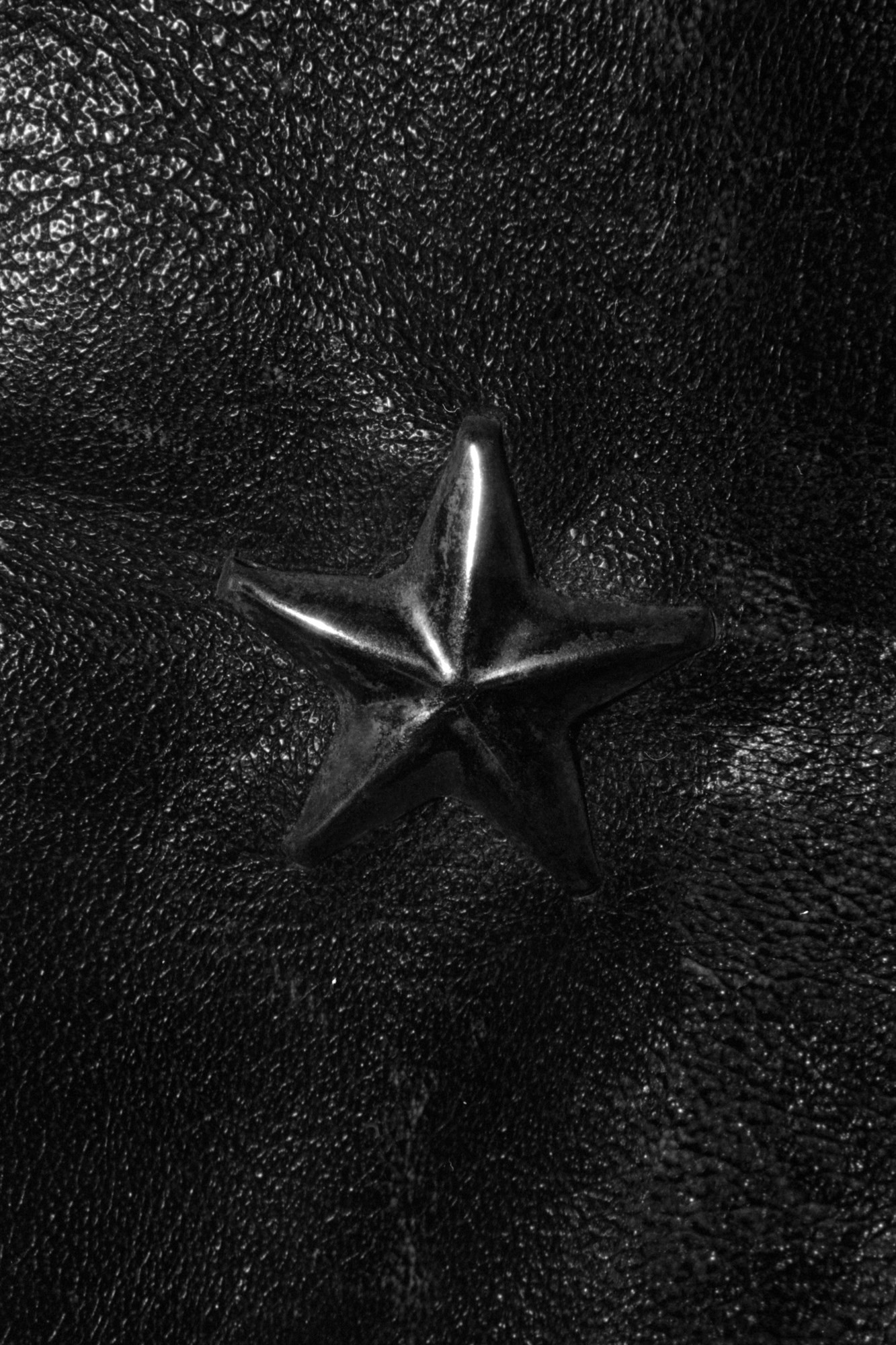
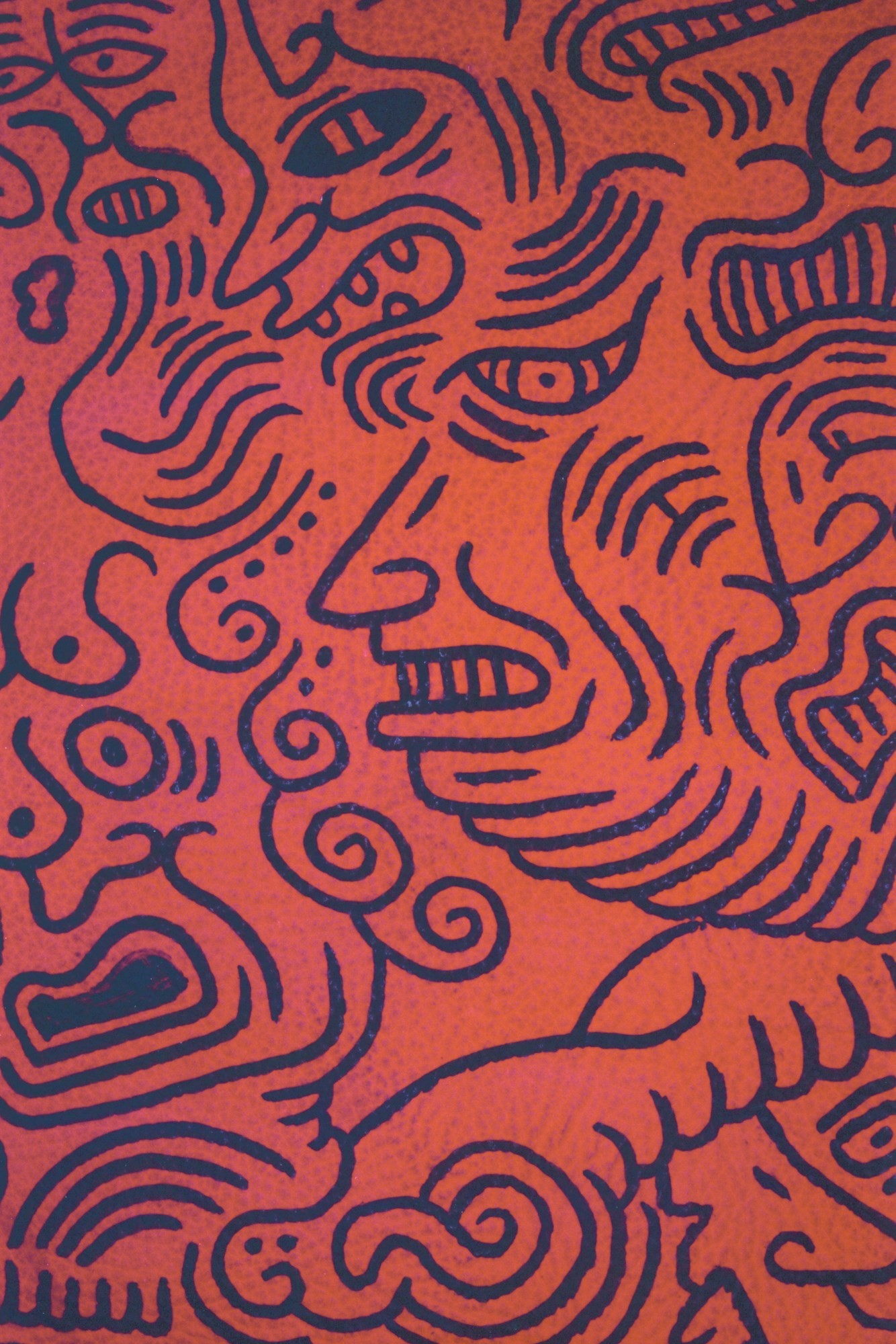
Fig 13. Fetish (left)
This star-shaped stud is a detail on an original punk jacket that Osterhoudt keeps as part of a much wider fetish collection. "I've always loved Westwood," she says, adding that she found this particular style in Paris's Clignancourt district. "There's an amazing shop in Paris called Ernest and designers will buy 14cm shoes there, but it’s always the same disaster on the catwalk, which is that no one can walk in those kinds of shoes."
Fig 14. Jenne’s Boots (right)
After leaving McQueen in 2003, Osterhoudt embarked on her own endeavour: a line of super sexy lace-up boots, which can be seen on Kate Moss in the most recent issue of AnOther. "I wanted to collaborate with a bunch of artists so I would cut out all of the pieces and give them to artists and tell them where the seam allowances were etcetera and they could do whatever the hell they wanted. I’m going to make some boots soon with more of a bitch heel and a fetish last – as high as you can go with a platform."
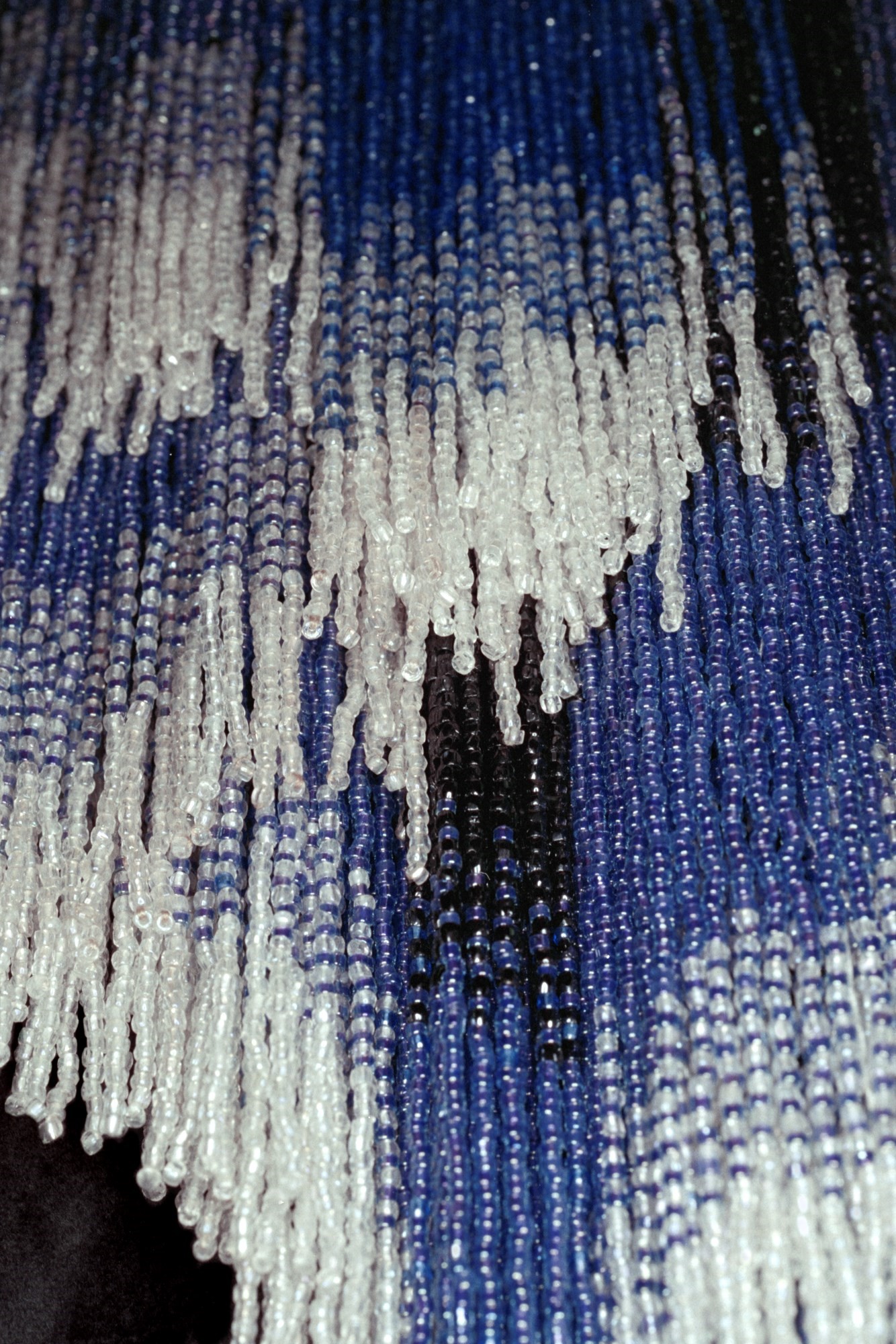

Fig 15. Wild, Wild West (left)
Osterhoudt remembers McQueen's spring 1998 Givenchy collection as the “Dallas show”, which Suzy Menkes described in The International Herald Tribune as “rhinestone cowgirls, with sparkly fringe dangling among strips of leather; or Las Vegas showgirls, when a slim dress had its bodice scooped out and filled with nude chiffon.” Set to a soundtrack of Lil Kim, it was perhaps a slickly produced parody of the Texan couture clients that would be snapping up McQueen's creations at Givenchy. “I remember Lee once put my dog in the haute couture show and the directrice at Givenchy came to me and said, ‘Jenne, there is a very important client that wants to buy the dog with the outfit – how much is it?’” This show, for most of the team, was full of joy. "It was a fun show to work on because it was a light-hearted theme,” says Osterhoudt. “For jewellery, I had done giant bull heads as buckles and I did these gorgeous fringed arms, with Vicky Sergeant. She hand-sliced all of this kid suede which was hand-dyed and then she hand-beaded it and sewed lot of rhinestones on each fringe by hand. You put them on your arm and then it buckles at the back, like chaps for your arms.”
Fig 16. The Graduate (right)
“This was from the graduate collection of Catherine Brickhill, who was McQueen’s first assistant at Givenchy,” explains Osterhoudt of the red mousseline dress. “I lived with her at McQueen’s flat in Paris, which had four bedrooms in Place de Vosges in the Marais, which is this posh square. All of us lived there and Katy [England] would stay there when she came. Cath had a really big influence in the late 90s on McQueen because she loved fur and reptiles and leather and would do all of those pieces.”
For more information, see The Arc.


